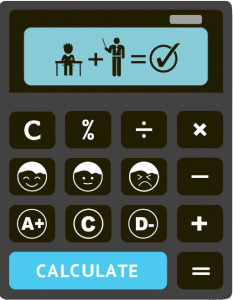Overview
Developing a strong understanding of fractions and decimals is crucial for your success in year 6 maths. Fractions and decimals are not just abstract numbers; they have practical applications in everyday life, such as cooking, measurements, and financial calculations. By mastering them, you’ll enhance your problem-solving skills and be well-equipped for future mathematical challenges. Let’s dive in and explore a bit more together!
Learning Outcomes
By the end of this article, you will:
- Be able to add and subtract fractions with unlike denominators confidently.
- Understand how to determine a fraction of a whole.
- Be able to multiply fractions.
- Be able to divide fractions.
- Discover how to multiply a decimal number by a power of 10 and efficiently shift the decimal point.
- Learn the technique of dividing a decimal number by a power of 10 and correctly adjust the decimal placement.
- Develop the skill to multiply decimals, paying attention to the decimal point positioning in the final answer.
Adding and Subtracting Fractions with Unlike Denominators
In year 5, you learned how to add or subtract fractions when the denominators were equal. But what if the denominators are different? Let’s look at a couple of examples…
Add: \(\frac{1}{2}+ \frac{2}{3}\)
Although the denominators are different, we can use the concept of equivalent fractions to change them to 6, which is the LCM of 2 and 3 (the two denominators).
\(\frac{1}{2}= \frac{3}{6}\)
\(\frac{2}{3}= \frac{4}{6}\)
Therefore, \(\frac{1}{2}+ \frac{2}{3}=\frac{3}{6}+ \frac{4}{6}=\frac{3+4}{6}=\frac{7}{6}\)
Subtract: \(\frac{5}{6}- \frac{3}{4}\)
Here, the common denominator should be 12, which is the LCM of 6 and 4 (the two denominators).
\(\frac{5}{6}= \frac{10}{12}\)
\(\frac{3}{4}= \frac{9}{12}\)
Therefore, \(\frac{5}{6}- \frac{3}{4}=\frac{10}{12}- \frac{9}{12}=\frac{10-9}{12}=\frac{1}{12}\)
Try this: Add – \(\frac{3}{8}+ \frac{4}{5}\)
Fraction of a Whole
Fractions can be used to determine a part of a whole. For instance, imagine there are 30 students in a class, and 3/5 of them are boys. How many boys are there in the class? This can be found by calculating 3/5 of 30. To do this, divide 30 into 5 equal parts and combine 3 of those parts.
\(30\div 5=6\) and \(6\times 3=18\). So, we say, “three-fifth of 30 is 18”, and there are 18 boys in the class.
Here’s another question for you: In a group of 35 people, 1/7 are adults. How many adults are in the group?
Multiplying Fractions
To multiply two or more fractions, multiply the numerators to get the numerator of the answer fraction. Likewise, multiply the denominators to get the denominator of the answer fraction. Remember, you should always look to simplify the numbers before you multiply. Take, for example, multiplying \(\frac{2}{3}\) and \(\frac{9}{16}\). You should simplify the 2 from the top with the 16 from the bottom and the 9 from the top with the 3 from the bottom, as shown below.
Therefore, \(\frac{2}{3}\times \frac{9}{16} = \frac{1}{1}\times \frac{3}{8} = \frac{1\times 3}{1\times 8}\ = \frac{3}{8}\ \)
Your turn now: Multiply – \(\frac{4}{7}\times \frac{21}{10}\)
Dividing Fractions
To divide fraction A by fraction B, change the division to multiplication and swap the numerator and the denominator of the divisor fraction (B). Then, multiply in the same way as mentioned above. Here’s an example:
\(\frac{3}{4}\div \frac{9}{8} = \frac{3}{4}\times \frac{8}{9} = \frac{2}{3}\)
Multiplying a Decimal Number by a Power of 10
Powers of 10 are simply 10 multiplied by itself, such as 10, 10 x 10 = 100, 10 x 10 x 10 = 1000, and so on. When multiplying a decimal number by a power of 10, all you need to do is shift the decimal point to the right by the same number of places as the number of zeroes after 1. Let’s illustrate this with an example.
\(2.394\times 100 = 239.4\)
Notice how the decimal point has been shifted 2 places to the right.
Dividing a Decimal Number by a Power of 10
Dividing a decimal number by a power of 10 is equally straightforward. When dividing by a power of 10, shift the decimal point to the left by the same number of places as the number of zeroes after 1. Here’s an example.
\(1.6\div 100 = 0.016\)
Multiplying Decimals
When multiplying decimals, ignore the decimal points initially and multiply the numbers as whole numbers. To determine the final placement of the decimal point in the answer, count the total number of decimal places in the numbers being multiplied.
Example: To multiply 3.5 and 2.8, first multiply 35 and 28, ignoring the decimal points.
\(35\times 28 = 980\)
As there are 2 decimal points in all (one from each of the numbers multiplied), the answer must have 2 places after the decimal. Therefore,
\(3.5\times 2.8 = 9.80\)
Wrap Up
Congratulations on completing this journey through the world of fractions and decimals in year 6 maths! Remember, this article covered only a glimpse of the vast concepts within this topic. By mastering fractions and decimals, you’re setting yourself up for success in future mathematical endeavours. If you have any questions or need further assistance with year 6 maths, don’t hesitate to contact us.







